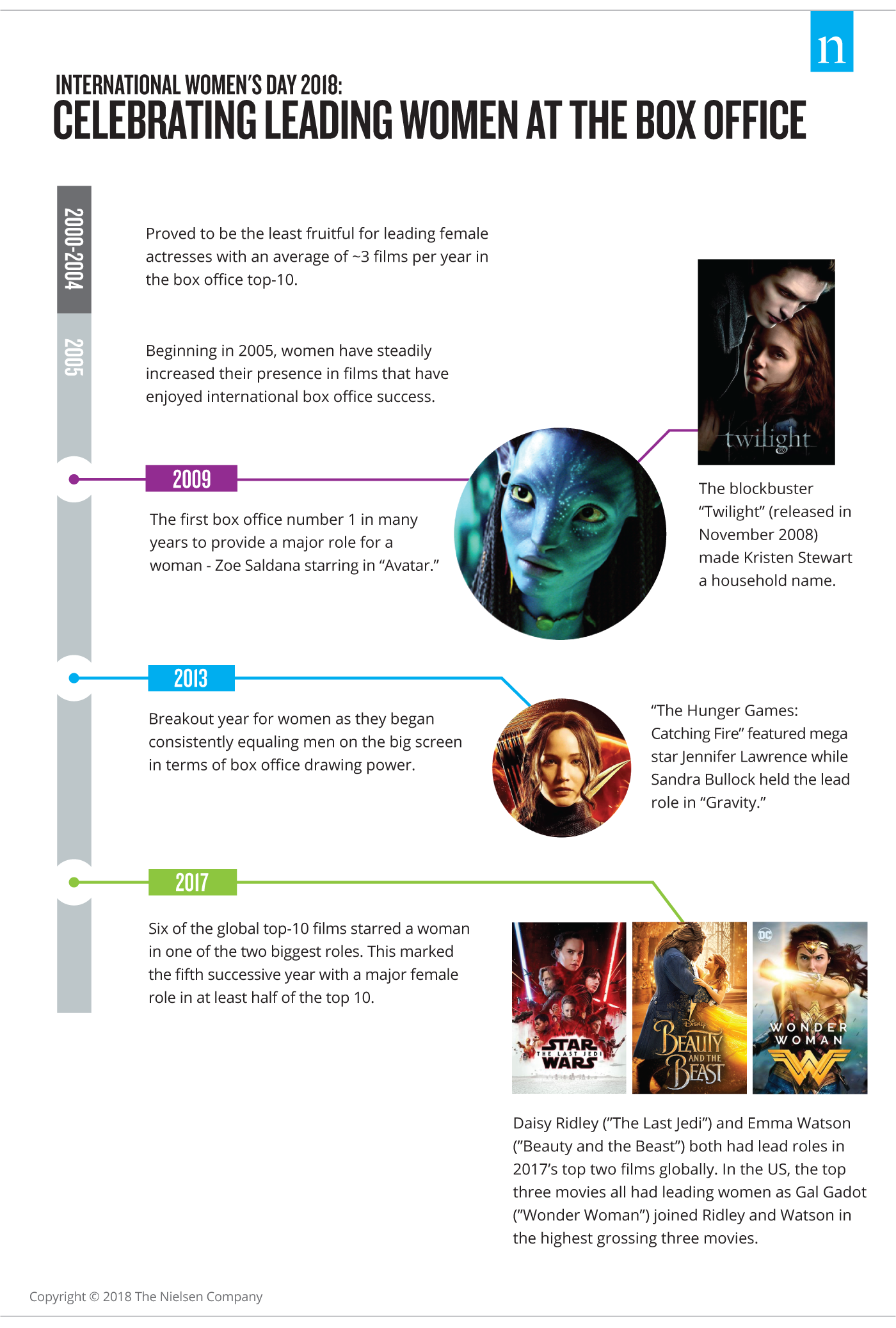To celebrate International Women’s Day 2018, Nielsen analyzed Gracenote‘s extensive entertainment data sets to glean new insights into how gender equality is progressing. Reviewing data since the new millennium, we focused on pivotal moments in time for women in film.
The past year has pushed the film industry to take a critical look at the roles available to women in Hollywood. While women are still less likely than men to appear in leading roles in box office hits globally, the number of women finding success at the box office has increased since the start of the century.
The first five years of the 21st century unfortunately proved to be the least fruitful for Hollywood actresses. On average, women were at the top of the credits for approximately three of the top-10 films per year. Bright spots were animated films “Finding Nemo” starring Ellen DeGeneres and “The Incredibles” starring Holly Hunter. These were two of the most successful films with a lead woman from 2000-2004.
The good news is that since 2005, women have consistently increased their impact on the box office with more prominent leading roles. 2013 proved to be a breakout year for women as they began equaling men in terms of drawing power. Mega box office hits that contributed to a leveling of the playing field with male counterparts were “Frozen,” “The Hunger Games: Catching Fire,” “Despicable Me 2” and “Gravity” among others featuring lead roles for women.
Women have steadily maintained their lead position in at least half of each year’s box office top 10 since 2013. Last year alone, we saw women in leading roles in six of the international top 10 box office films, including Daisy Ridley (“The Last Jedi”) and Emma Watson (“Beauty and the Beast”) at No. 1 and 2, respectively.




